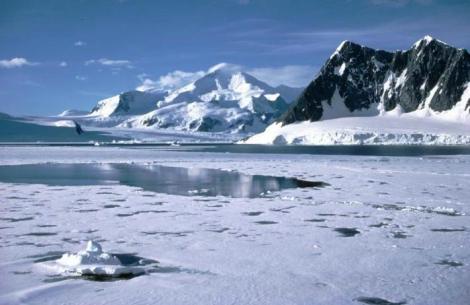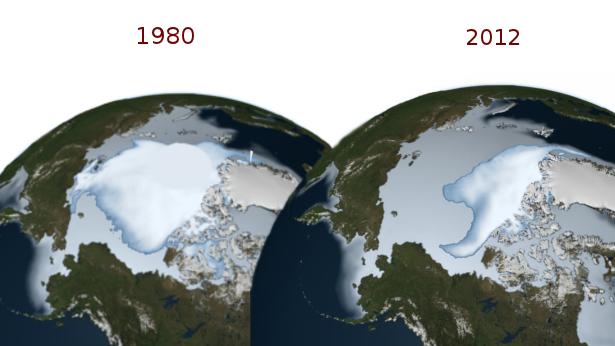The Earth's icy poles - what's happening?
Ice, water and water vapour - the three states of H2O....solid, liquid and gas.
The Earth has all three, which is unusual.
Planets are usually too hot or too cold to have them all.
Planets are usually too hot or too cold to have them all.
Ice on Earth is melting.

The Arctic includes an ocean covered by sea ice.
Arctic sea ice melts in Summer and then refreezes in Winter.
Arctic sea ice melts in Summer and then refreezes in Winter.
The area of Arctic sea ice is largest in March each year, and at its lowest each September.
It is reducing over time - the graph comes from the US National Snow and Ice Data Center.

The Antarctic is a continent covered by ice, unlike the ocean in the Arctic.
The sea ice surrounding Antarctica melts almost to the coast each summer.
The winter sea ice has increased by around 1 % over the last few decades.

Here is an outline of what is happening in the seas around Antarctica.
Seawater does not freeze until around minus 2 degrees C because it is salty.
Seawater does not freeze until around minus 2 degrees C because it is salty.
This effect of salt, of course, is used to help defrost roads.
The meltwater off Antarctica’s ice sheets is freshwater.
Freshwater has a low density, so it forms a layer on top of the sea.
Freshwater freezes (of course) at zero degrees C.

So the top layer freezes more easily.

So the top layer freezes more easily.
Also windchill helps to freeze that top layer.
Here is a useful comparison of Antarctic and Arctic sea ice ……
One reason is that energy is carried to the poles by large weather systems.

The long-term decline in Arctic sea ice is illustrated in these two graphics.